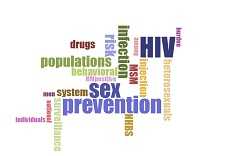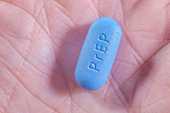Publications
NHBS – Featured Publications
NHBS Special Issue of JAIDS
Achieving Greater HIV Prevention Impact Through CDC’s National HIV Behavioral Surveillance System

Summary: NHBS is able to guide local and national high-impact prevention strategies by identifying who is at highest risk, what they are doing, and what services they need most. As exemplified by contributions to local prevention programs and policies and the analyses included in this supplement, NHBS data can be used to assess HIV risk behaviors, prevalence, and service utilization of the populations most affected by HIV in the United States and guide local and national high-impact prevention strategies to meet national HIV prevention goals by identifying communities most in need of HIV prevention efforts, monitoring how those needs change, and assessing uptake and effectiveness of HIV interventions, including HIV testing and treatment, PrEP, and access to sterile syringes and other services through SSPs. As we look to the future, behavioral surveillance remains essential for informing HIV prevention efforts at local and national levels by characterizing and monitoring HIV risk behaviors and utilization of testing and other prevention services.
Trends in injection drug use and HIV

Abstract: Persons who inject drugs (PWID) are at increased risk for poor health outcomes and bloodborne infections, including human immunodeficiency virus (HIV), hepatitis C virus and hepatitis B virus infections. Although substantial progress has been made in reducing HIV infections among PWID, recent changes in drug use could challenge this success. CDC used National HIV Surveillance System data to analyze trends in HIV diagnoses. Further, National HIV Behavioral Surveillance interviews of PWID in 22 cities were analyzed to describe risk behaviors and use of prevention services among all PWID and among PWID who first injected drugs during the 5 years before their interview (new PWID). During 2008-2014, HIV diagnoses among PWID declined in urban and nonurban areas, but have leveled off in recent years. Among PWID in 22 cities, during 2005-2015, syringe sharing decreased by 34% among blacks/African Americans (blacks) and by 12% among Hispanics/Latinos (Hispanics), but remained unchanged among whites. The racial composition of new PWID changed during 2005-2015: the percentage who were black decreased from 38% to 19%, the percentage who were white increased from 38% to 54%, and the percentage who were Hispanic remained stable. Among new PWID interviewed in 2015, whites engaged in riskier injection behaviors than blacks. Decreases in HIV diagnoses among PWID indicate success in HIV prevention. However, emerging behavioral and demographic trends could reverse this success.
HIV testing among PWID

Abstract: Persons who inject drugs (PWID) continue to be disproportionately affected by HIV. HIV testing is key to reducing HIV transmission by increasing awareness of HIV status and linking HIV-positive persons to care. Using data from PWID participating in CDC’s National HIV Behavioral Surveillance (NHBS) system, we examined prevalence of recent HIV testing among PWID by certain characteristics to guide interventions to increase HIV testing. We analyzed NHBS data from PWID 18 years or older recruited via respondent-driven sampling in 20 US cities in 2012. We examined demographic and behavioral factors associated with recent HIV testing (within 12 months before interview) using a Poisson model to calculate adjusted prevalence ratios (aPRs). Of 9555 PWID, 53% had recently tested for HIV. In multivariable analysis, HIV testing was more frequent among participants who visited a healthcare provider (aPR 1.50, P<0.001), participated in alcohol or drug treatment (aPR 1.21, P<0.001), or received an HIV prevention intervention (aPR 1.26, P<0.001). HIV testing was also more frequent among participants who received free sterile syringes (aPR 1.12, P<0.001). Only half of PWID participating in NHBS in 2012 reported recent HIV testing. HIV testing was more frequent among participants who accessed health and HIV prevention services. To increase HIV testing among PWID, it is important for providers in healthcare and HIV prevention settings to proactively assess risk factors for HIV, including injection drug use, and offer a wide range of appropriate interventions, such as HIV testing.
PrEP use among MSM

Abstract: Pre-exposure prophylaxis (PrEP) is an effective prevention tool for people at substantial risk of acquiring human immunodeficiency virus (HIV). To monitor the current state of PrEP use among men who have sex with men (MSM), we report on willingness to use PrEP and PrEP utilization. To assess whether the MSM subpopulations at highest risk for infection have indications for PrEP according to the 2014 clinical guidelines, we estimated indications for PrEP for MSM by demographics. We analyzed data from the 2014 cycle of the National HIV Behavioral Surveillance (NHBS) system among MSM who tested HIV negative in NHBS and were currently sexually active. Adjusted prevalence ratios and 95% confidence intervals were estimated from log-linked Poisson regression with generalized estimating equations to explore differences in willingness to take PrEP, PrEP use, and indications for PrEP. Whereas over half of MSM said they were willing to take PrEP, only about 4% reported using PrEP. There was no difference in willingness to take PrEP between black and white MSM. PrEP use was higher among white compared with black MSM and among those with greater education and income levels. Young, black MSM were less likely to have indications for PrEP compared with young MSM of other races/ethnicities. Young, black MSM, despite being at high risk of HIV acquisition, may not have indications for PrEP under the current guidelines. Clinicians may need to consider other factors besides risk behaviors such as HIV incidence and prevalence in subgroups of their communities when considering prescribing PrEP.
Decreases in condom use among MSM

Abstract: Evaluate changes in condomless anal sex at last sex among men who have sex with men (MSM) and assess if these changes are associated with the adoption of serosorting and biomedical prevention. The National HIV Behavioral Surveillance is a cross-sectional survey done in up to 21 cities in 2005, 2008, 2011 and 2014. MSM were recruited through venue-based sampling. Among men reporting at least one male partner, we evaluated changes in condomless anal sex at last sex with a partner with (1) HIV-concordant (proxy for serosorting) or (2) HIV-discordant (discordant/unknown) status. We hypothesized that if concordant condomless sex was increasing while discordant was stable/declining, the increases could be driven by more men attempting to serosort. We used generalized estimating equations assuming a Poisson distribution and robust variance estimator to explore whether temporal changes in the outcomes varied by selected characteristics. We also assessed changes in condomless anal sex by antiretroviral therapy (ART) use among HIV-positive MSM. Among 5371 HIV-positive MSM, there were increases in concordant (19% in 2005 to 25% in 2014, P < 0.001) and discordant condomless sex (15 to 19%, P < 0.001). The increases were not different by ART use. Among 30 547 HIV-negative MSM, concordant (21 to 27%, P < 0.001) and discordant condomless sex (8 to 13%, P < 0.001) increased. Our data suggest that condom use decreased among MSM and that the trends are not explained by serosorting or ART. Promotion of condoms and increased access to preexposure prophylaxis are vital to ensure that the benefits of ART in reducing transmission of HIV are not undermined.
Full NHBS bibliographies
- Page last reviewed: January 5, 2017
- Page last updated: July 14, 2017
- Content source: Division of HIV/AIDS Prevention, National Center for HIV/AIDS, Viral Hepatitis, STD, and TB Prevention, Centers for Disease Control and Prevention


 ShareCompartir
ShareCompartir